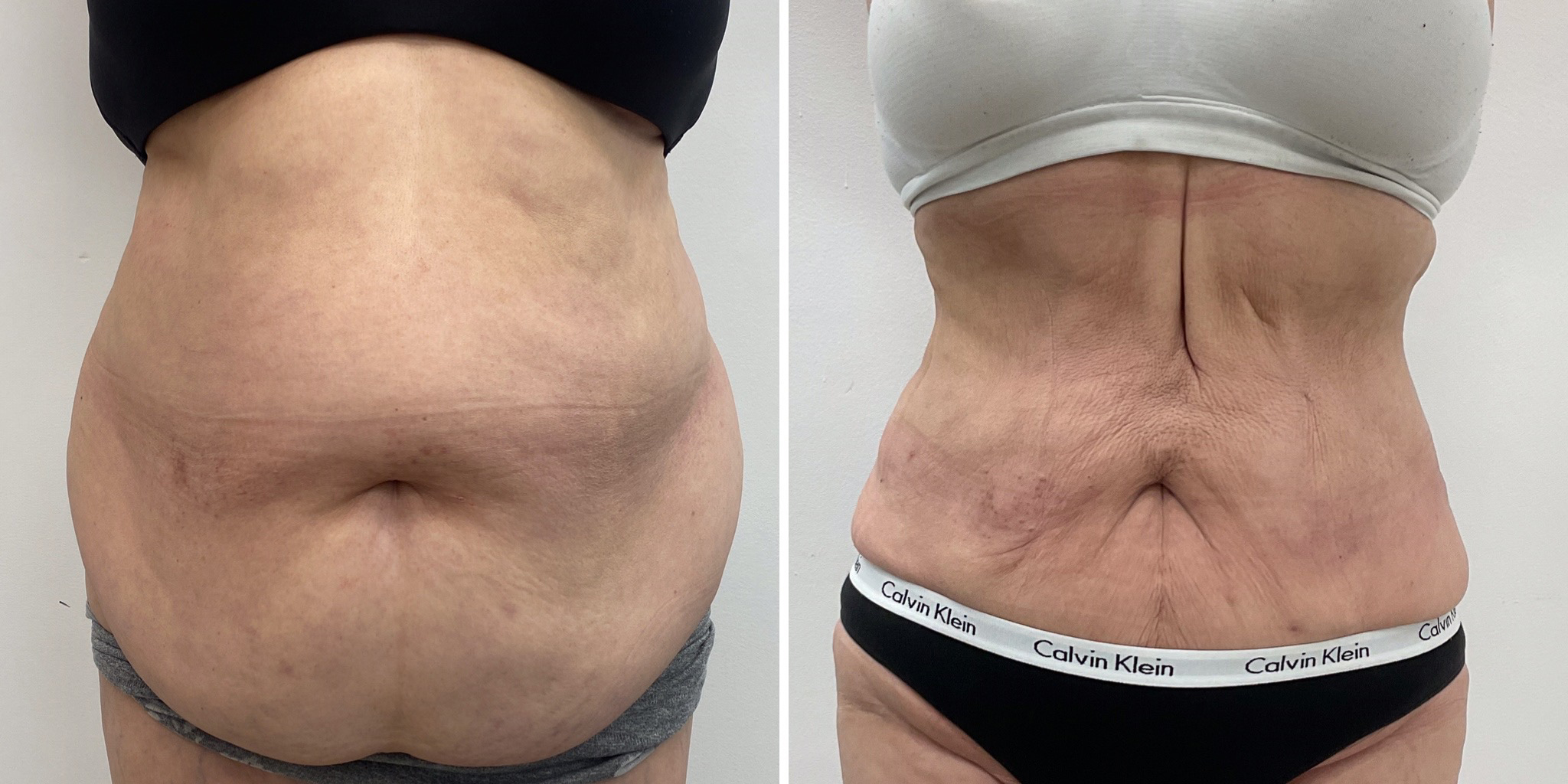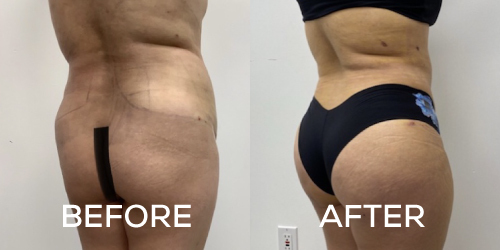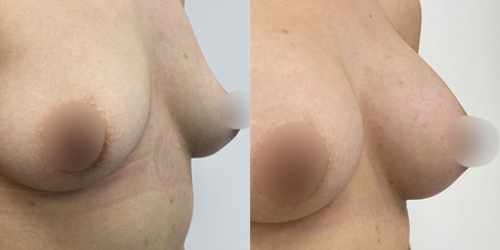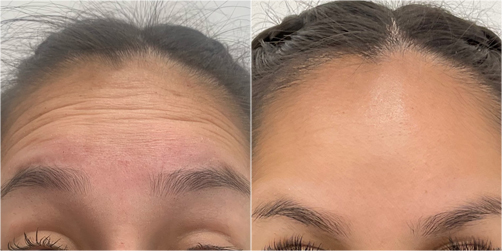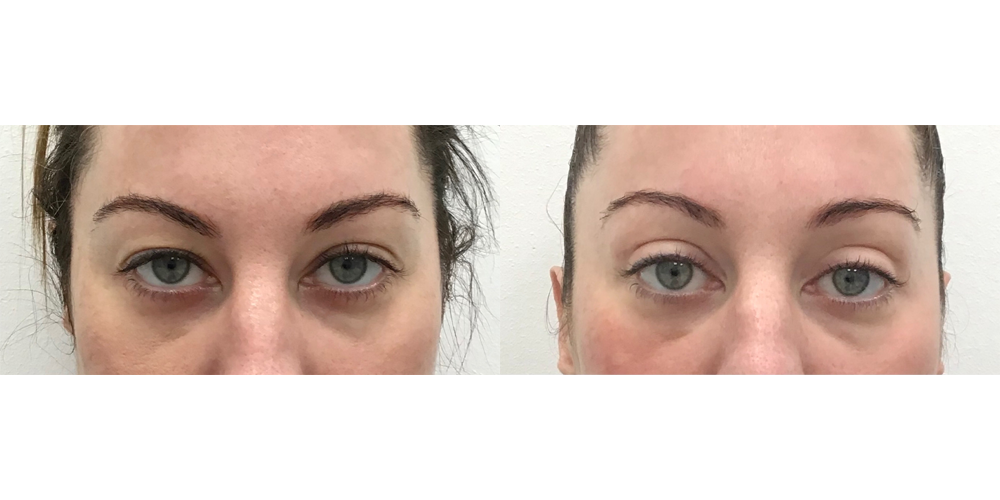Hyperhidrosis Disorder
Consultations offered at our two convenient locations in Alhambra and Santa Ana
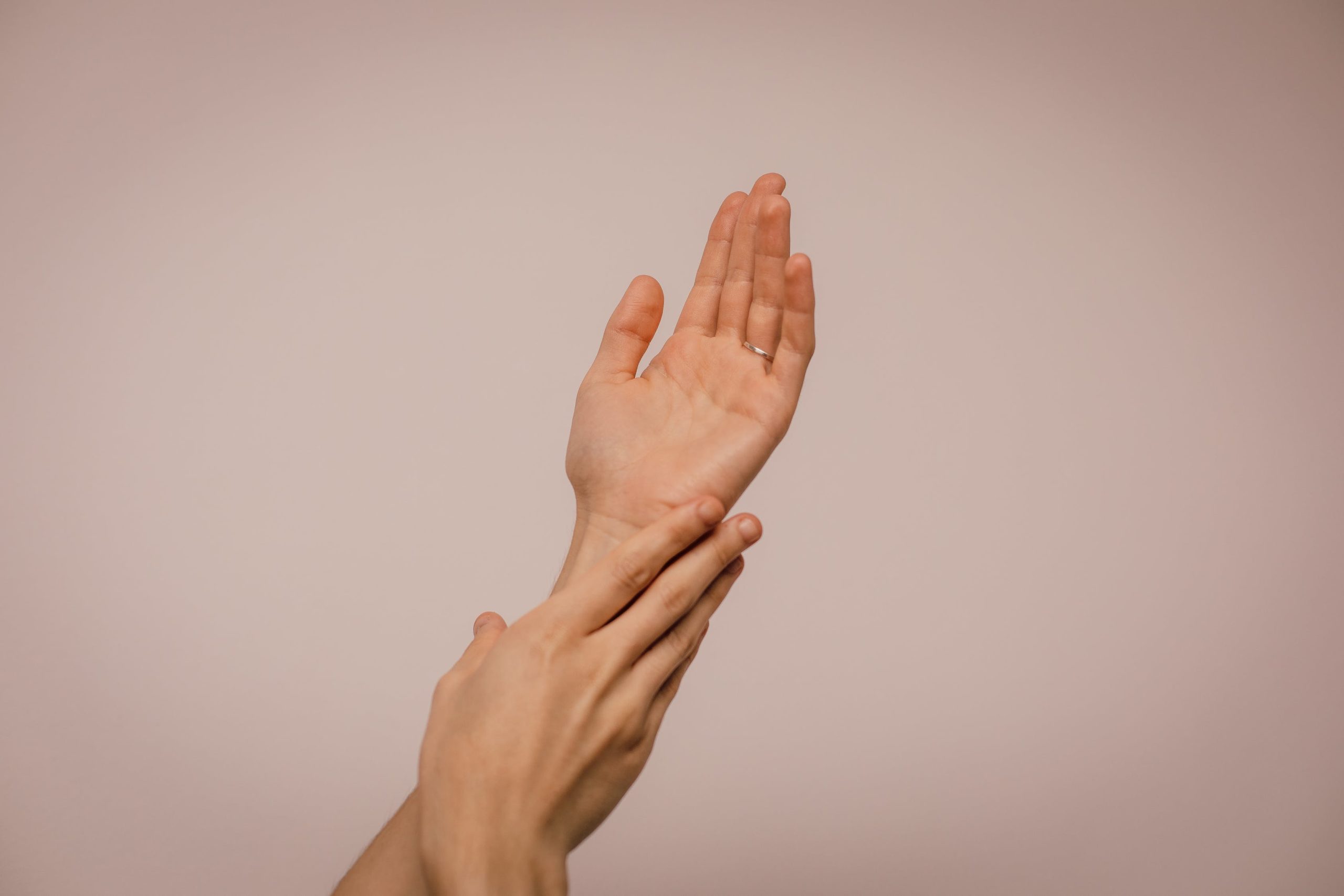
Sweating is a fact of life. Humans lose water through their skin as a result of hot environments, raised body temperature, anxiety, and physical exertion. However, for some individuals, sweating is not the result of a linear course of events. For some, sweating in excess just happens.
Wet shirts can prevent even the most excited person from lifting their arms in fear of embarrassment. Dampness may be uncomfortable and stain your favorite clothes. Repeated checking and wiping away sweat during the course of the day can be tiresome. Expensive antiperspirants, powders, and other remedies may be ineffective at bringing your excessive underarm sweating under control. If primary axillary hyperhidrosis (chronic excessive sweating of the underarms) is affecting your life, Botox may be the solution for you!
Dr. Hannah Vu and her practice, Skinzone Laser & Cosmetic Surgery serve the Alhambra and Santa Ana communities. She provides individuals struggling with hyperhidrosis with doses of Botox to help them stay drier and comfortable for longer. If excess sweating is a concern for you, contact Skinzone today to schedule a consultation to learn more about Botox treatment for hyperhidrosis.
Contents
What is hyperhidrosis disorder?
Hyperhidrosis is the medical term for excessive sweating. The perspiration caused by hyperhidrosis does not occur simply because of raised temperatures or physical activity. Rather, the eccrine sweat glands are overstimulated and cause uncontrollable sweating.

To be formally diagnosed with hyperhidrosis, you must experience underarm sweating for 6 months or more at a time with no true identifiable cause. In addition to this, you must meet at least 2 other criteria to meet the diagnosis. The sweating impairs your day to day functioning, you have a family history of hyperhidrosis, and excess sweating has been experienced before age 25 are just a few of the specific diagnostic criteria for hyperhidrosis.
For many patients, hyperhidrosis may present as being focal in nature. This means that the excess sweating is present in the underarms, palms of the hands, and/or soles of the feet.
How can Botox help with hyperhidrosis?
Botox is a household name when it comes to the world of aesthetic anti-wrinkle treatment. Lesser known are the injectable’s medical applications. From treating muscle stiffness and spasms in children and adults to treating migraines, Botox has been FDA-approved as a therapeutic treatment for many medical concerns, including primary axillary hyperhidrosis.
Botox for sweating blocks acetylcholine from being released in the treatment area.
This prevents the overstimulation of the eccrine sweat glands, which, in turn, reduces the sweat response in the underarms. Research has shown that botox is a very effective temporary treatment for hyperhidrosis as it significantly reduces sweating of the armpits for an average of 201 days at a time.
Benefits
Treating chronic excessive sweating of the underarms with Botox can come with many benefits. Patients who have received the treatment from Dr. Vu have reported that they enjoy the long-lasting results and that the procedure was fairly quick.
Botox for Sweating Benefits
- Relatively quick, in-office procedure
- Tiny injections
- Significant reduction in underarm sweating
- Increased self-esteem and physical comfort
- Less laundry and dry cleaning
- Long-lasting results
- Enhanced quality of life
If you want to experience the priceless benefits of treatment of severe underarm sweating with Botox, contact Skinzone today to schedule a time to meet with Dr. Hannah Vu in Alhambra or Santa Ana!
Candidates
If you are looking to receive Botox injections to manage primary axillary hyperhidrosis you should be a healthy adult with healthy skin under your arms. You may have tried a countless number of antiperspirants and other methods to reduce your sweating, but it seems like nothing has worked for you. You may also not desire to undergo more extensive procedures such as surgery or laser treatment.
If you are a candidate for Botox treatment to manage excessive axillary sweating, call our Alhambra office at (626) 329-4555 or our Santa Ana office at (714) 361-1555 to schedule a consultation.
Your Private Consultation
During a private consultation with Dr. Hannah Vu, you will be encouraged to share your experience with excessive sweating and your expectations of Botox treatment. Dr. Hannah Vu will provide you with information regarding the procedure, being sure to answer any questions you may have. From there, you will be asked to provide details about your health and medical history. Dr. Vu will examine the skin under your arms. After this thorough assessment, Dr. Hannah Vu will determine your candidacy for Botox injections to treat primary axillary hyperhidrosis.
Are you ready to learn more about how Botox treatment can help you achieve drier underarms and relieve you of excessive sweating? Contact Skinzone today to schedule a consultation.
Preparation
While each patient’s individual needs will vary, generally, patients should not apply any deodorants and antiperspirants to their armpits for at least 24 hours prior to their Botox treatment. Additionally, hair must be removed from the area before your appointment. If there are any other directives specific to your case, Dr. Hannah Vu will inform you of them during your consultation.
Procedure
During your appointment for Botox injections to manage chronic sweating, Dr. Hannah Vu will review your treatment plan with you. Your armpits will be cleansed and Dr. Hannah Vu will mark your underarms with a felt-tipped marker. The Botox must be administered in a precise manner to be the most effective, so these markings will direct Dr. Hannah Vu’s application of the neuromodulator.
A topical anesthetic will be applied to your skin to help keep you comfortable during the procedure.
Once the anesthetic has taken effect, Dr. Hanna Vu will inject Botox into your underarms in small amounts. As she follows the grid-like pattern marked on your skin, Dr. Hannah Vu will take special care to inject the solution just under your skin to hinder stimulation of the sweat glands.
Recovery
After your Botox session is complete, you may resume your normal activities for the day. There is no downtime necessary following Botox treatment for hyperhidrosis. You may experience some mild bruising and tenderness at the treatment site, however, this should subside in the days immediately after your appointment.
Results
Botox for sweating is an excellent choice to help reduce your discomfort, both physically and emotionally. Within 5 days of receiving botox injections in your underarms, you will notice a significant improvement in the amount you sweat under your arms! Once Botox’s full effects are realized, you can expect your armpits and shirts to be drier for about 6 months, on average!
If you are tired of using different deodorants and antiperspirants to tame your sweating, reach out to Skinzone today! Our friendly and knowledgeable staff are willing to help you schedule your Botox consultation.
At around this time, sweating may gradually increase as the nerves in your underarms begin to regenerate. You may return to see Dr. Hannah Vu for another session to keep hyperhidrosis under control.
Many patients report greater confidence and a better quality of life after Botox treatment for hyperhidrosis. They feel more comfortable as they move about in the world without the constant worry of being embarrassed or damaging their clothes because of excess sweating.
How much does Botox for sweating cost?
Botox treatment is a very individualized procedure. This is because there are a number of factors to consider when it comes to the tiny injections. The variety of these considerations will cause the final price to vary between patients. Here, at Skinzone, we believe a life-changing procedure such as Botox treatment for sweating should not be unattainable because of price. We offer financing options for patients who qualify, as well as pricing specials at different times throughout the year to help you save on your treatment. If you have questions about Skinzone’s payment or financing options, feel free to contact us to book your consultation.
FAQ
Is using Botox effective for excessive sweating?
Botox is FDA-approved for the treatment of primary axillary hyperhidrosis, among a number of other cosmetic and medical applications. This demonstrates that Botox is safe and effective when utilized for its intended use and is safe when administered in the appropriate manner. Botox works by blocking acetylcholine from overstimulating the eccrine sweat glands in the armpits. This treatment has been shown to reduce sweating by up to 80% at its peak and lasts 6.7 months, on average.
How long does Botox for sweating last?
Botox for primary axillary hyperhidrosis (chronic severe underarm sweating) may last 180 days, on average. At this time, you may return for a follow-up visit with Dr. Hannah Vu for another session.
Is Botox for sweating safe?
Botox is an FDA-approved neuromodulator that has been thoroughly studied for many years and has proven to be a safe treatment for excessive underarm sweating. Meeting with Dr. Hannah Vu for an informative consultation can help further mitigate potential risks. During this appointment, Dr. Hannah Vu will review your health, medical, and family history, including any allergies you may have and medications you may be taking. She will also examine your skin at the treatment site to ensure it is healthy. After collecting all of the necessary information, Dr. Hannah Vu will determine if Botox treatment is right for you. This will help keep you safe and make sure that you have a successful result.
Additional Resources
- Allergan. (2020). How Botox Works. Retrieved from https://www.botoxseveresweating.com/Can_botox_help/how_works
- Budamakuntla, L., Loganathan, E., George, A., Revanth, B. N., Sankeerth,V., & and Sarvjnamurthy, S. A. (2017). Comparative Study of Efficacy and Safety of Botulinum Toxin a Injections and Subcutaneous Curettage in the Treatment of Axillary Hyperhidrosis. Journal of Cutaneous and Aesthetic Surgery, 10(1), 33-39. Retrieved from https://www.ncbi.nlm.nih.gov/pmc/articles/PMC5418980/#!po=75.0000





